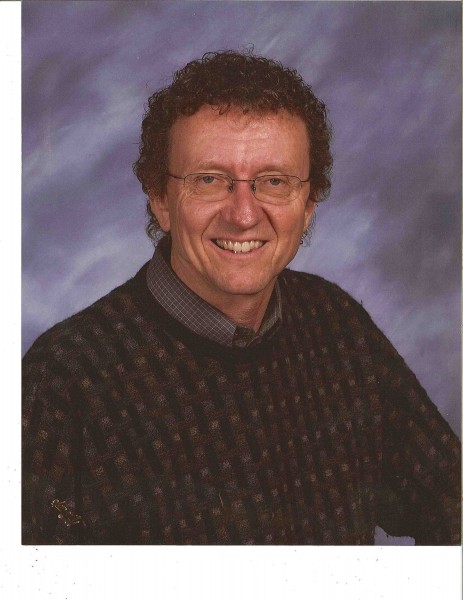By Robert Borthwick

Lately there is a lot of talk about trails and walkways in Laguna Beach: bike trails, safe walking routes, “complete streets”, and other methods of non-vehicular circulation. A few years ago, my firm designed the popular San Clemente Railroad Corridor Beach Trail. Prior to my involvement, an engineering firm designed an earlier plan that provoked backlash from the citizens and was rejected. The completed project has been very successful, and the Indy asked me to tell the story.
The 2.4-mile trail parallels the railroad tracks all along the San Clemente coast extending from North Beach to Califia Beach, with the San Clemente Pier approximately in the middle. Residential areas on the bluffs above overlook the trail, tracks and beach beyond. Pedestrian and bicycle access from neighborhoods and street ends produce many opportunities for both enjoyment of the coast and safety problems related to railroad crossings.
In 1998 the city contracted with a large engineering company to design a “Class-A” 12-foot wide asphalt bicycle trail along this route. The proposed trail would necessitate huge amounts of paving, additional boulder rip-rap extending onto the beach, grading into existing natural hillsides, and miles of chain link fence along the railroad tracks. The engineers were well along with their plans when the public realized the environmental implications of the project. Concerned residents mounted a massive campaign to “De-Rail the Trail”. This effort was successful, and in 1999 the original project was terminated. The Council appointed a blue ribbon committee to determine community needs and preferences. This committee met for nearly a year and published their findings. Their proposed trail criteria included: a decomposed granite trail that would be shared by joggers, walkers, and bicyclists; no additional boulder “rip-rap” on the beach; no grading into the natural slopes; improvements in pedestrian safety with designated beach access points at nine locations; and preserving the natural ambiance and rustic character of the site.
San Clemente issued a new request for proposal in 2000 based on these guidelines, and our firm was selected to lead the planning and design team. We started from scratch, working with the city and the committee. The trail officially opened in 2006, and the final project cost was $15 million.
The project included at-grade pedestrian railroad crossings, pedestrian underpasses, and a 1,000 ft. long pedestrian bridge to avoid grading at a particularly tight slope condition. To complicate things further, there were 12 public agencies (regional, state, and federal) that had to approve the project. In particular, the California Public Utilities Commission was strong in opposition. Due to liability issues, the PUC policy is to decrease the number of designated railroad crossings, not increase them. To make beach access safer for the neighborhoods along the trail, increasing the number of authorized crossings was crucial to the success of the plan. After years of meetings and negotiations, in 2004 the PUC withdrew their opposition. Due to its success and popularity, all the agencies that were originally against the project now strongly embrace it as a model of collaboration.
As Laguna residents, we share the same values regarding environmental preservation, increased non-vehicular circulation, and sensitive, artistic design. San Clemente was fortunate to have residents Stephanie Dorey and Kathryn Stovall-Dennis (among others) spend countless months and personal funds traveling to Sacramento to lobby for the trail, along with their mayor and city staff. For her leadership as a volunteer on the project, Dorey was elected to the City Council and became a very effective and popular mayor. She passed away from cancer before the trail was completed. Her husband John Dorey and her close friend Stovall-Dennis completed the efforts. It was a gargantuan David-vs-Goliath task. “David” prevailed, and San Clemente got its trail.
There are many lessons to be learned: the first one might be for all the user-groups to be flexible. The San Clemente Trail is not exclusively for joggers, walkers, mountain-bikers, or high-speed bicyclists. It is a trail for everyone, and everyone makes adjustments and gets along. Surveys have indicated that over 90% of users are “very pleased” with how the trail functions. The second lesson could be: If there is an idea worth achieving, stay optimistic and don’t give up.
When the San Clemente city planning and recreation staff projected trail usage prior to construction, it was estimated that over 250,000 trips might be generated per year. Current user tabulation is 1.8 million trips per year, over seven times the original estimate. Clearly, the trail is enormously popular with people of all ages and physical abilities…. from young parents with strollers to seniors in walkers, and everyone in between. It demonstrates the needs we have, as a society, for exercise, fresh air, and social interaction. The San Clemente Trail links all the various neighborhoods together in one continuous green thread, and the local newspaper has written that the trail “is the best thing that San Clemente has ever done.”
Laguna has different constraints, but we still have opportunities to vastly improve our town by creating non-vehicular travel routes where possible. We just need to be visionary, creative, and persistent.
Bob Borthwick is a landscape architect and 40 year resident. He’s served on the city’s Open Space/Trails Committee.





[…] read with great interest and appreciation Bob Borthwick’s inspiring article, “The Tale of a Trail,” in last week’s Indy on the history of the San Clemente Beach Trail, now considered a model of […]
[…] the Indy travels worldwide. The week following my guest column (“Tales of the Trail”, Aug. 7) on the San Clemente Beach trail, I received an email from the United Nations Environment Programme […]
[…] the Indy travels worldwide. The week following my guest column (“Tales of the Trail”, Aug. 7) on the San Clemente Beach trail, I received an email from the United Nations Environment Programme […]
[…] will take $500,000 to upgrade the preserve’s entrance, says Borthwick, who hopes to tap Ferguson’s experience in raising funds for land […]